About this detail of the Tiger
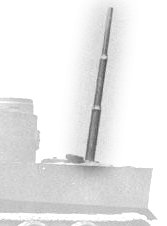
Early Tigers carried a large snorkel for river crossings. The snorkel was made of several sections and could be attached to the rear deck.
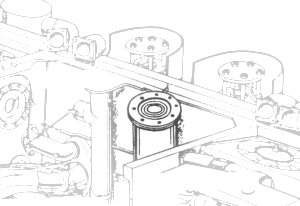
When not in use, the snorkel sections were nested inside each other and stored in a large tube. The tube was attached to the hull roof, and occupied the space behind the engine.
This entire apparatus is missing from the MFH model.

The Tiger had fenders attached along its sides. As originally designed in 1942, the fenders were made in 2 different lengths, and they were not installed in a straight line. There was a kink in the fender line, as shown here.
Later, the fenders were redesigned. They were made all the same length and they were put in a straight line.
The MFH kit does not include the original 1942 fenders, although they are needed for two of the decal options. The kit includes only the later type of fenders.
Some Tigers were configured for use by unit commanders. They had additional radio equipment. The MFH kit provides the extra antennae and major external parts for a Command Tiger.
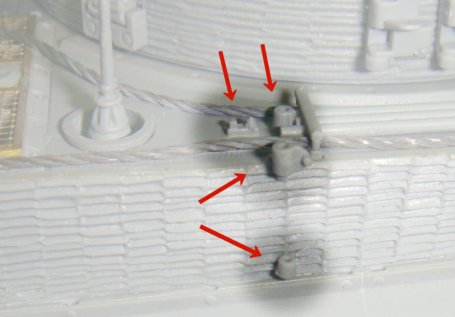
However, the MFH kit does not include a group of small parts located on the right hull side. This photo shows the parts supplied in a Dragon kit.
On the inside of the MFH kit there is no provision at all for the Command version. It should have an extra radio set in the turret and a generator in the hull. The rear right-hand ammunition box in the upper hull, should not be installed.
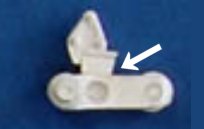
The MFH kit was apparently modelled on a museum Tiger whose suspension had collapsed. The MFH model sits about 1mm too low, because the front and rear suspension arms are touching the limit stops. There should of course be room to move before the arm hits the stop.
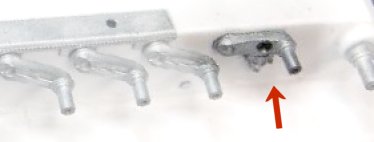
As a result, the front and rear arms on the MFH kit cannot move and don't have magnet suspension like the rest.
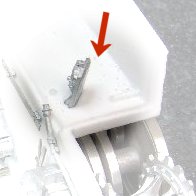
This is the sponson on the driver's left side, in a partially completed MFH kit. The metal part shown here is the gyrocompass. In the MFH model, it is just a facia. There is nothing behind it.
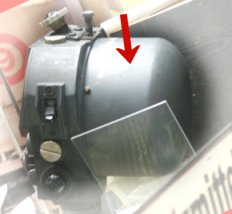
The real gyrocompass had a large round casing behind its facia.
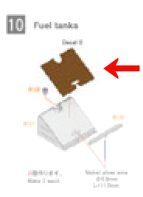
The MFH kit provides decals for the upper fuel tanks. The decals represent wooden covers that sat above the tanks. In stage 10 of the instructions, you are told to apply them.
But in fact, there were no wooden covers on the fuel tanks in an Early Tiger. This cover was not invented until much later.
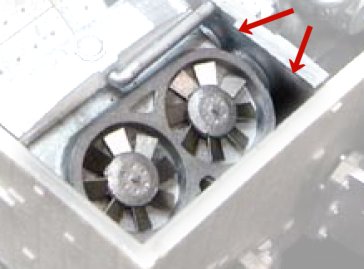
In this MFH model, there are pairs of fans at the rear of the tank. The kit parts appear to be undersized by about 10%. There are large gaps between the fan housings and the walls, as indicated here.
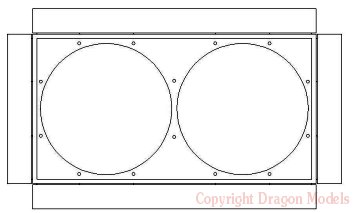
The real Tiger had cover plates to block those holes. Dragon have released Tiger kits with the cover plates supplied in photo-etch form.
There was a toolbox stored at the rear left of the Early Tiger. At first it was held on two metal bars with a strap. Later, a robust frame with two straps was used.
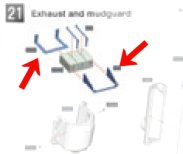
The MFH kit has no option here. It provides only the frame, but that is not appropriate for all of the decal options.
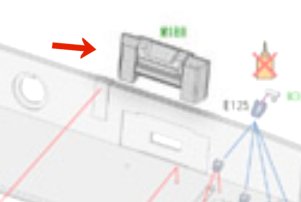
The Tiger's front visor had movable upper and lower parts. The MFH kit provides only a single piece for the visor. The depth of the opening cannot be set by the model builder.
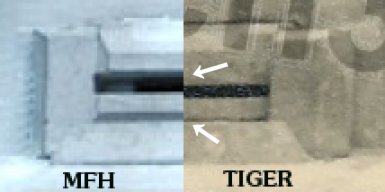
In the real visor, the upper and lower parts were geared to move each by the same amount. Therefore the center of the opening always remained in the same place.
This photo compares the MFH piece to a real visor, showing that the opening is not in the correct position.
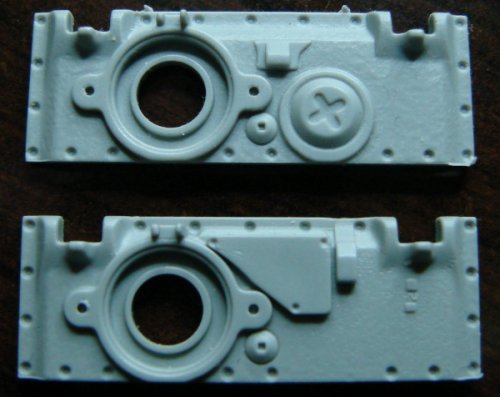
There was a cover plate over the Tiger's engine, behind the main hatch. It was changed in March 1943. These parts, from another manufacturer's kit, represent the two versions of the cover plate.
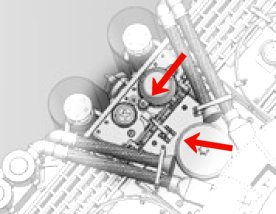
The MFH kit provides only the first version of the plate, but this version is not correct for all of the decal options in the kit. The position of the hook on the main engine hatch is also not correct for the later sets of decals.
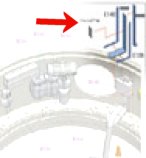
In the MFH kit, there is an MP40 storage bracket inside the turret.
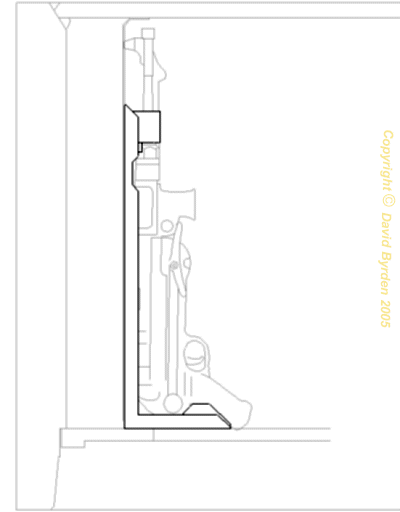
In the real Early Tiger an MP40 personal weapon was normally stored here, along with ammunition clips. These are not provided in the kit.
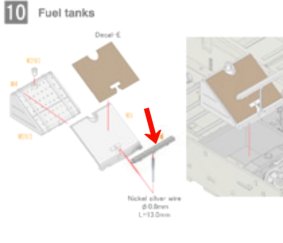
The MFH kit builds up with a vertical rod behind the main fuel tanks. On top of this rod there is a large crossbar, indicated here.
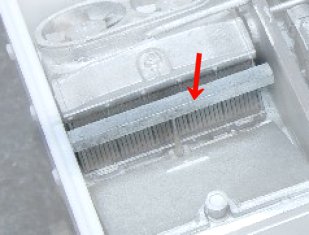
In the completed kit, when you remove the hull top, this crossbar remains suspended in front of the radiators, as shown here.
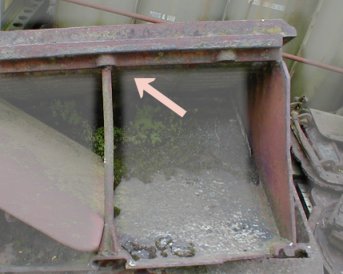
But in a real Tiger, the crossbar did not exist. The vertical rod was attached directly to the grating on the roof, as you can see in this wreckage.
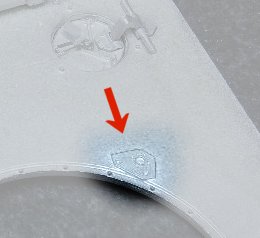
The hull roof is removable from the MFH model. Underneath it has some detail, including the heads of the turret bolts. At the forward left of the turret there is a small raised panel with holes in it, shown in this photo. The holes should penetrate through the roof plate, but they do not.
In fact, this panel was the attachment point for a mechanism to lock the turret. It comprised a plunger, a large lever, and other features such as the turret drain cock. This mechanism would be visible even with the hull roof installed. None of those parts are included in the MFH kit.
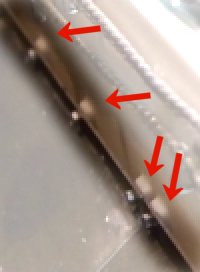
When the fenders are applied to the side of the MFH kit, this is the result. There is a significant gap between the fender and the side wall. The attachment blocks (indicated here) are clearly visible in this gap.
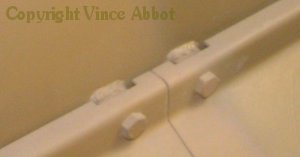
In a real Tiger, the fender was folded over to close this gap. Small notches were made above the attachment blocks.
The rear mudguards on the Tiger had two unequal holes in them. The pattern of holes was the same on both sides.
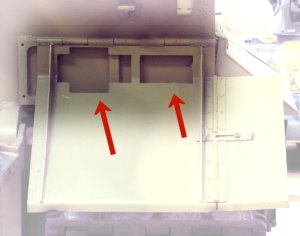
This mudguard on a museum Tiger shows the two holes. The left-hand hole was always larger.
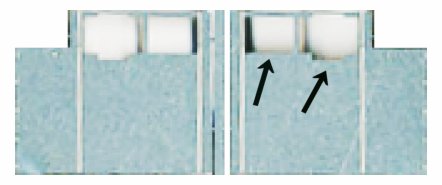
But in the MFH kit, the holes in the right-side mudguard are reversed.

The Tiger's outer wheels were removable. The odd-numbered wheels were mounted on a long axle, with a flange halfway along it. This flange is missing from the MFH model's wheels.

The MFH kit gives you the option of building "early" or "initial" Tigers. One difference between them, is the position of the cable ends. These sketches from MFH are showing us how to place the cable ends near the forward hatch, for each type of Tiger.
But in fact, the rear end of the cable also changed. The clips holding the cable on the rear deck were moved, and the fire extinguisher was shifted. The MFH kit doesn't allow for these changes on the rear deck.